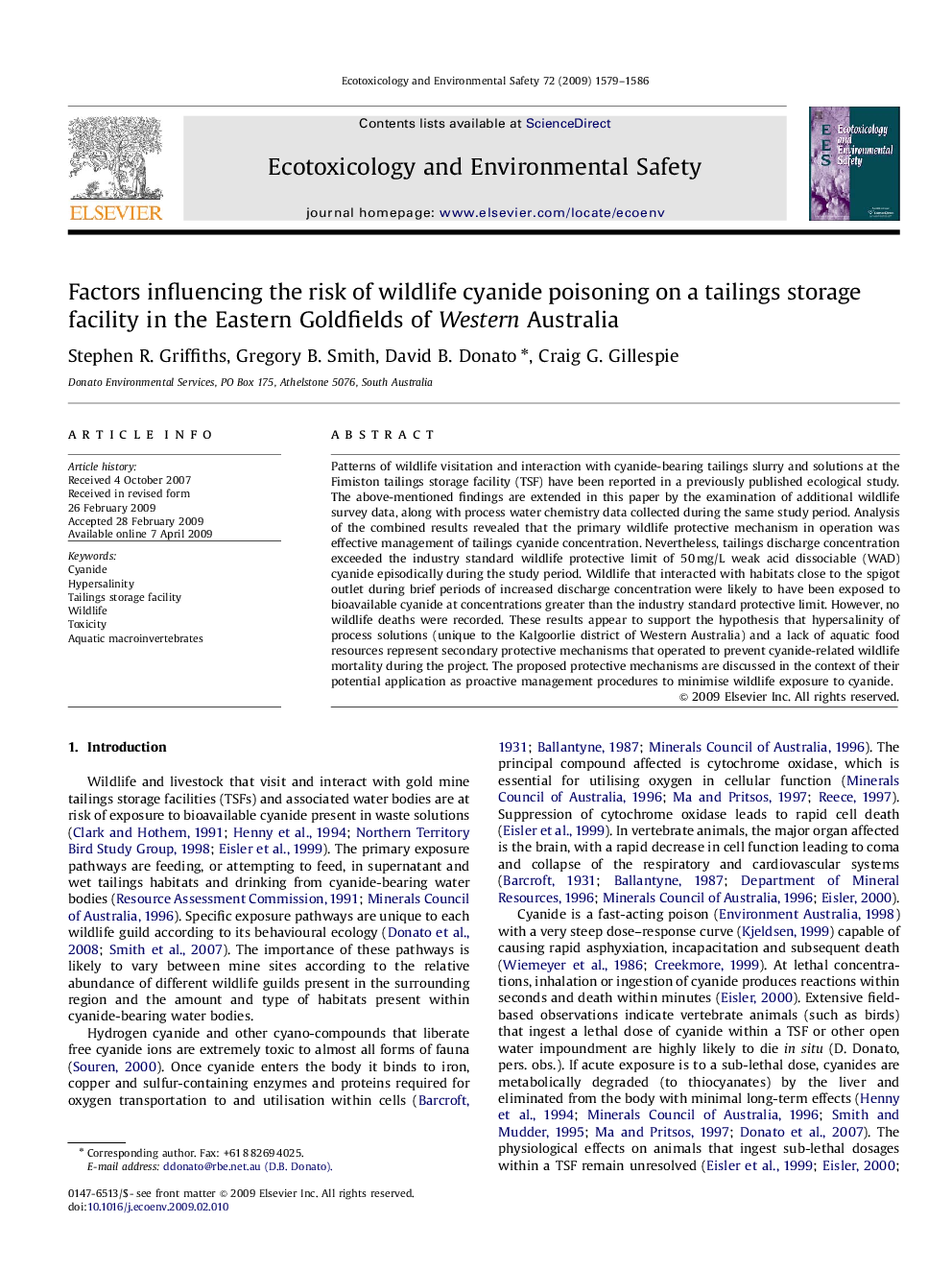| Article ID | Journal | Published Year | Pages | File Type |
|---|---|---|---|---|
| 4421782 | Ecotoxicology and Environmental Safety | 2009 | 8 Pages |
Patterns of wildlife visitation and interaction with cyanide-bearing tailings slurry and solutions at the Fimiston tailings storage facility (TSF) have been reported in a previously published ecological study. The above-mentioned findings are extended in this paper by the examination of additional wildlife survey data, along with process water chemistry data collected during the same study period. Analysis of the combined results revealed that the primary wildlife protective mechanism in operation was effective management of tailings cyanide concentration. Nevertheless, tailings discharge concentration exceeded the industry standard wildlife protective limit of 50 mg/L weak acid dissociable (WAD) cyanide episodically during the study period. Wildlife that interacted with habitats close to the spigot outlet during brief periods of increased discharge concentration were likely to have been exposed to bioavailable cyanide at concentrations greater than the industry standard protective limit. However, no wildlife deaths were recorded. These results appear to support the hypothesis that hypersalinity of process solutions (unique to the Kalgoorlie district of Western Australia) and a lack of aquatic food resources represent secondary protective mechanisms that operated to prevent cyanide-related wildlife mortality during the project. The proposed protective mechanisms are discussed in the context of their potential application as proactive management procedures to minimise wildlife exposure to cyanide.
